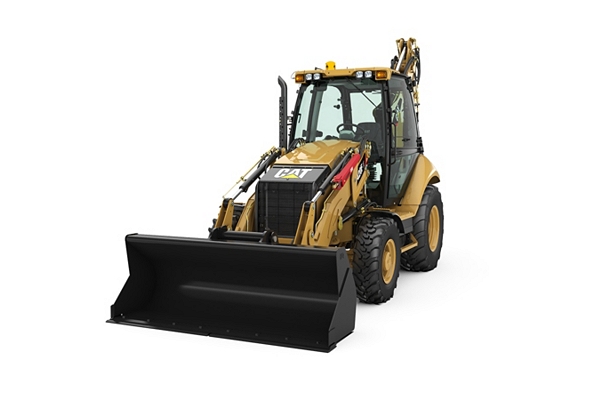Scissor Lift Rental: Safe and Efficient Solutions
Scissor Lift Rental: Safe and Efficient Solutions
Blog Article
Renting Vs. Acquiring Construction Tools: Making the Right Choice for Your Task
When beginning on a building and construction task, one of the vital decisions that forecast stakeholders and managers deal with is whether to purchase or rent building and construction tools. The choice hinges on various variables such as price factors to consider, task duration, devices maintenance, scalability, risk, and versatility management.
Cost Considerations
Leasing devices typically needs reduced initial repayments contrasted to buying, making it an attractive choice for short-term projects or contractors with spending plan restrictions. In the lengthy run, continuously leasing equipment can build up higher costs than acquiring, especially for extensive jobs.
On the other hand, acquiring construction equipment involves greater upfront prices yet can result in lasting cost savings, particularly for regular customers or long-term projects. Owning tools offers adaptability, benefit, and the capacity for resale value once the task is finished. Furthermore, owning tools permits personalization and knowledge with details equipment, possibly boosting performance and performance on-site. Ultimately, the choice between renting and acquiring construction equipment hinges on the project's period, regularity of use, budget plan factors to consider, and long-lasting financial goals.
Project Duration

On the other hand, for long-term jobs or continuous construction job, buying tools might be the a lot more economical alternative. Investing in devices can result in set you back financial savings in the long run, particularly if the devices will certainly be often made use of. Moreover, possessing devices supplies a feeling of control over its accessibility and permits for modification to fit certain task needs.

Devices Maintenance
Offered the vital role job duration plays in figuring out the most affordable method between leasing and acquiring building and construction equipment, the emphasis currently changes in the direction of checking out the essential element of devices upkeep. Correct upkeep is vital for ensuring the ideal efficiency and longevity of building devices. Renting tools typically comes with the benefit of having properly maintained machinery given by the rental firm. This can minimize the concern of upkeep tasks from the job proprietor or specialist, saving time and initiative. On the various other hand, having tools calls for an aggressive technique to maintenance to avoid break downs, make sure safety and security, and prolong the devices's life expectancy. Routine evaluations, maintenance, and prompt repair work are required to keep owned and operated tools in top working condition. Element in maintenance expenses when deciding between renting out and getting, as overlooking upkeep can cause expensive repair services, downtime, and job hold-ups. Inevitably, a properly maintained building devices fleet, whether rented or possessed, is important for the efficient and effective completion of building tasks. visit this web-site
Flexibility and Scalability
In the realm of building and construction tools administration, the aspect of adaptability and scalability holds significant importance for task efficiency and source use. Opting to lease building and construction tools supplies a high degree of adaptability as it permits the fast change of tools types and amounts based upon the advancing needs of a project. Leasing makes it possible for professionals to access a vast array of specialized tools that may be required for particular jobs without the long-term commitment of possession. This versatility is particularly helpful for projects with differing demands or uncertain durations (construction equipment rentals).
Renting building and construction tools supplies the advantage of quickly scaling operations up or down as job needs change. Contractors can swiftly exchange or include equipment to match the task's transforming needs without the restrictions of owning properties that might become underutilized or obsolete.
Threat Management
Effective risk monitoring in building and construction devices operations is critical to making certain job success and mitigating prospective economic losses. Building and construction tasks inherently involve different risks, such as equipment breakdowns, accidents, and project delays, which can significantly impact the job timeline and budget plan. By thoroughly taking into consideration the threats connected with owning or leasing building and construction equipment, task managers can make informed decisions to lessen these prospective dangers.
Renting construction equipment can use a level of danger reduction by moving the duty of maintenance and repair work to the rental company. This can lower the monetary problem on look at more info the task proprietor in situation of unanticipated devices failings (heavy equipment rental). In addition, leasing offers the versatility to access specialized equipment for particular job stages, minimizing the danger of owning underutilized machinery
On the other hand, having building and construction devices supplies a feeling of control over its use and upkeep. However, this additionally indicates birthing the full obligation for repair services, upkeep expenses, and depreciation, increasing the financial threats connected with devices possession. Careful danger analysis and factor to consider of elements such as job duration, equipment usage, and upkeep needs are critical in identifying one of the most ideal alternative for reliable risk monitoring in building jobs.
Final Thought
Finally, when choosing between renting and getting building and construction equipment, it is crucial to take into consideration expense, job period, equipment upkeep, flexibility, risk, and scalability management. Each factor plays a vital duty in figuring out the most suitable alternative for the task available. By meticulously assessing these aspects, job managers can make an enlightened decision that lines up with their spending plan, timeline, and overall job objectives.

Report this page